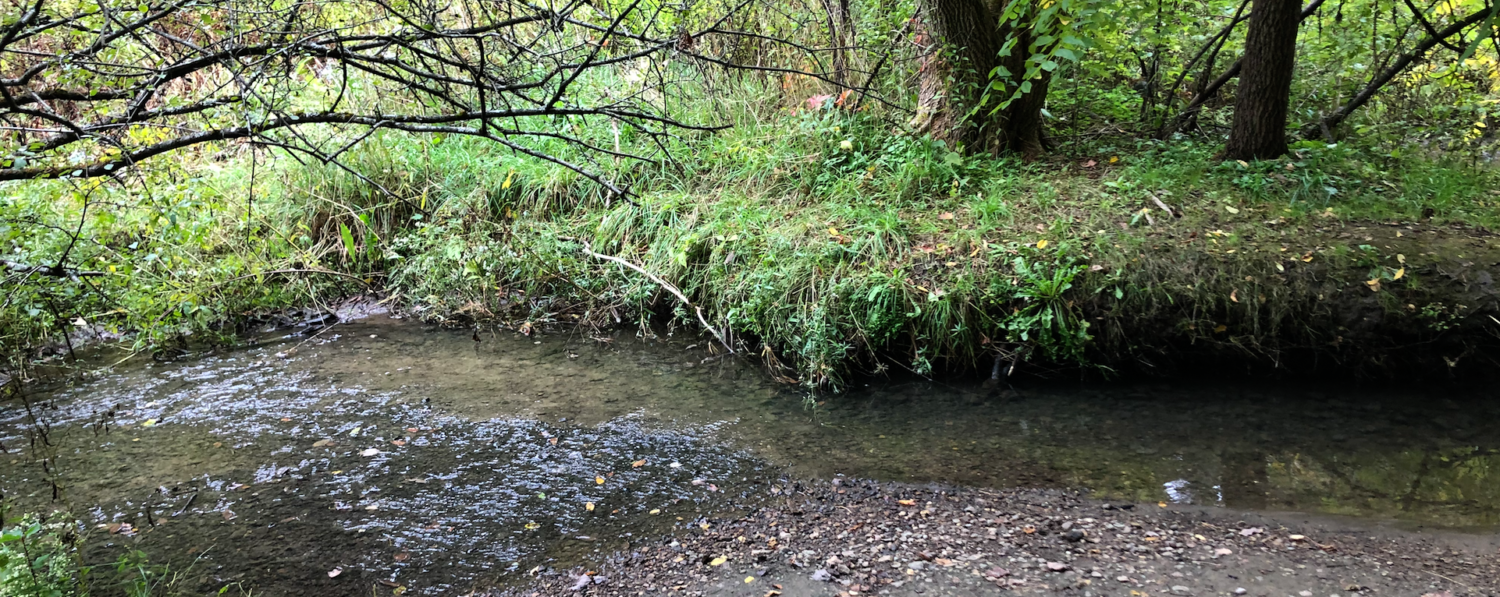Yesterday while visiting my site in centennial woods it was gorgeously balmy, with it being fifty degrees. The snow had become slightly slushy from melting and the brook was flowing heavily from the newly melted ice integrating pack into the flow of the stream. Since I had last been there though, ice had formed over the top of the stream, but was now just a thin veil over the gushing of the water. The only noises to be heard at 5 o’clock were the F-35 jets that passed by overhead and the rushing of the water. They high amount of human activity could be seen in the compression of the snow on the path and the slush that was created by slipping shoes. There was much more snow during this visit than there had been the last. There were also many more noticeable dog paw prints scattered in the snow which was interesting.
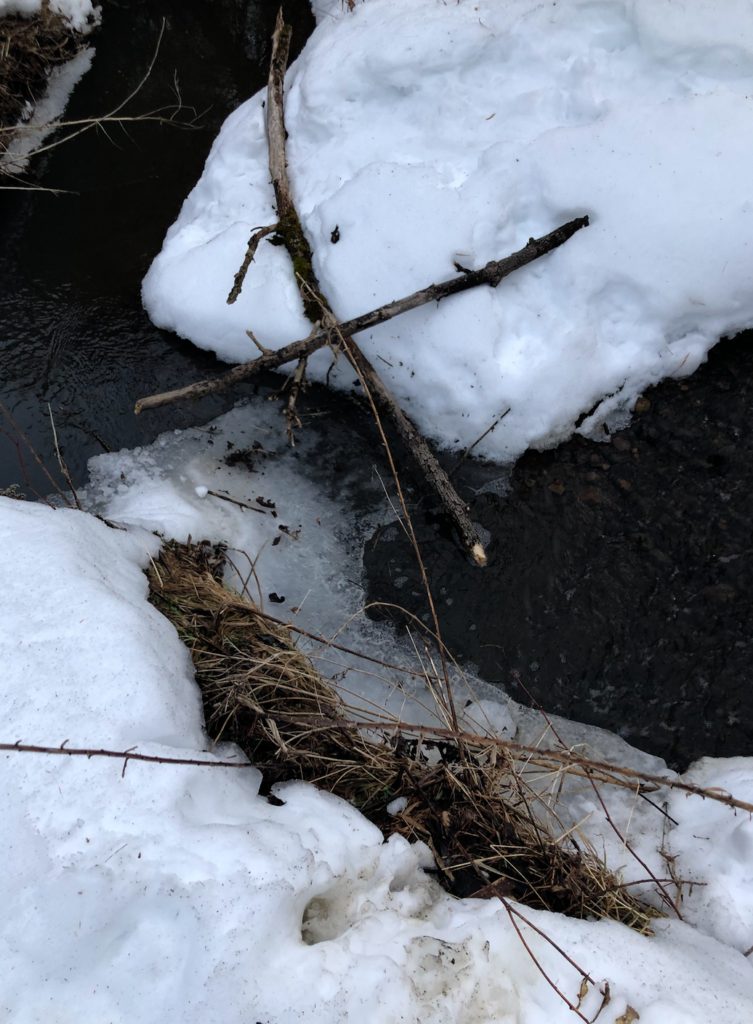
Menice, K. (ca. 2020)
From the human eye a lot of animals that frequent the forest are unseen. We usually just see the path that we’re on, the snow that covers the ground, and the trees that surround us. One animal that will show itself to humans pretty frequently though is the squirrel. Most commonly seen in Vermont is the gray squirrel (Sciurus carolinensis) which is usually found in hardwood stands (Vermont Fish and Wildlife, 2020). In this part of centennial, there are many American Beech, Red Maple, and Sugar Maple trees which are well liked by the gray squirrel.
A source of water such as a pond or stream is something important that needs to be established near a squirrel’s sleeping site. This time of year, squirrels sleep in dens or in other holes such as those from abandoned woodpeckers (Vermont Fish and Wildlife, 2020). The area just has to be small enough so a raccoon can’t fit through because that is one of their predators since they can carry round worm which is deadly to squirrels (McMillan-Gamber. C, 2010). The raccoon is not directly a predator, but the parasite it carries is a threat. Other animals such as owls or hawks are also a threat to squirrels.
For food, squirrels like seed producing trees such as hickory, oak, and beech. Oak trees produce acorns, so oak is the most common tree for a squirrel find itself near. There was a lack of both acorns and oak trees at my site so in turn there was a lack of tracks. Since the area wasn’t fully canopied this area could have just been a passing through spot for many squirrels to get water and scout the area. The squirrels like to be in heavily canopied areas of the forest because it helps them to better hide from predators. The potential tracks could have also melted away since the day had been very warm for February. The identifying evidence that there had been squirrels in the area was the fact that there was bark strewn across the top layer of snow. There was also some shredded bark in between the trunks of three trees that was easily seen because of the snow. Another tree showed heavy animal interaction since almost all of its bark was scratched away. The scratching would be due to either an animal climbing up the tree or from another animal trying to get to an insect of some sort in the bark. Scratching bark would also leave behind a scent so it could be used to mark a territory. There were also signs of termites in the meat of the tree once all the bark was stripped away. This could have been from the gray squirrel or other animals in the area such as a gray fox or an eastern coyote (communication, McDonald, M. 2020) .
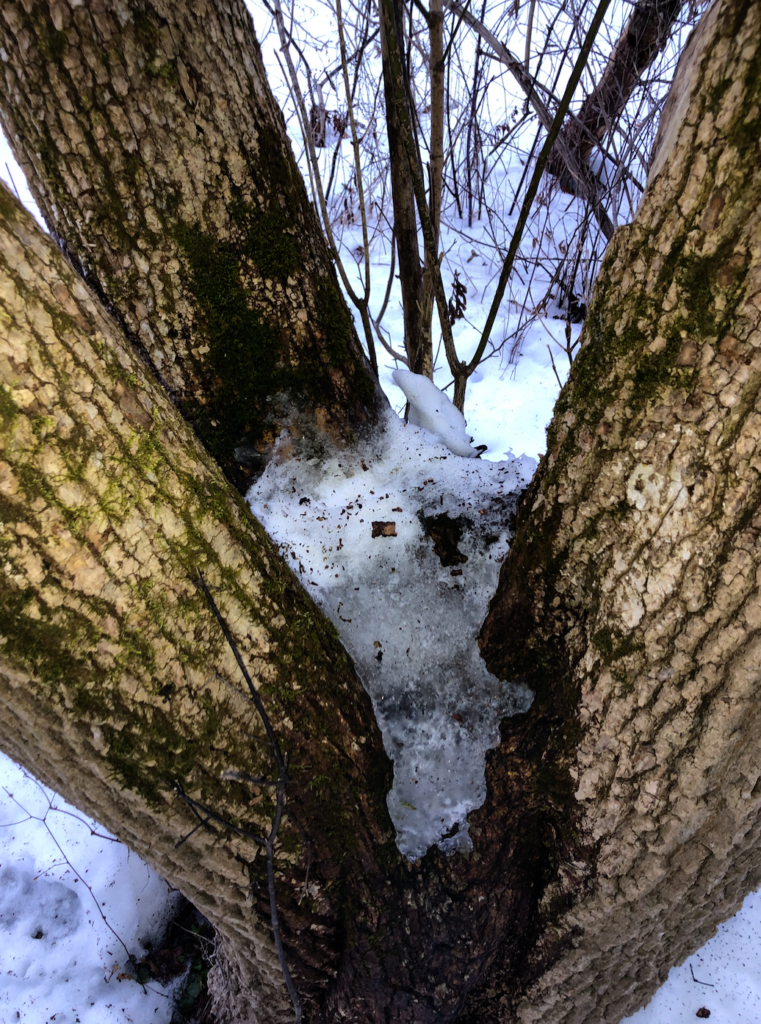
Menice, K. (ca. 2020)
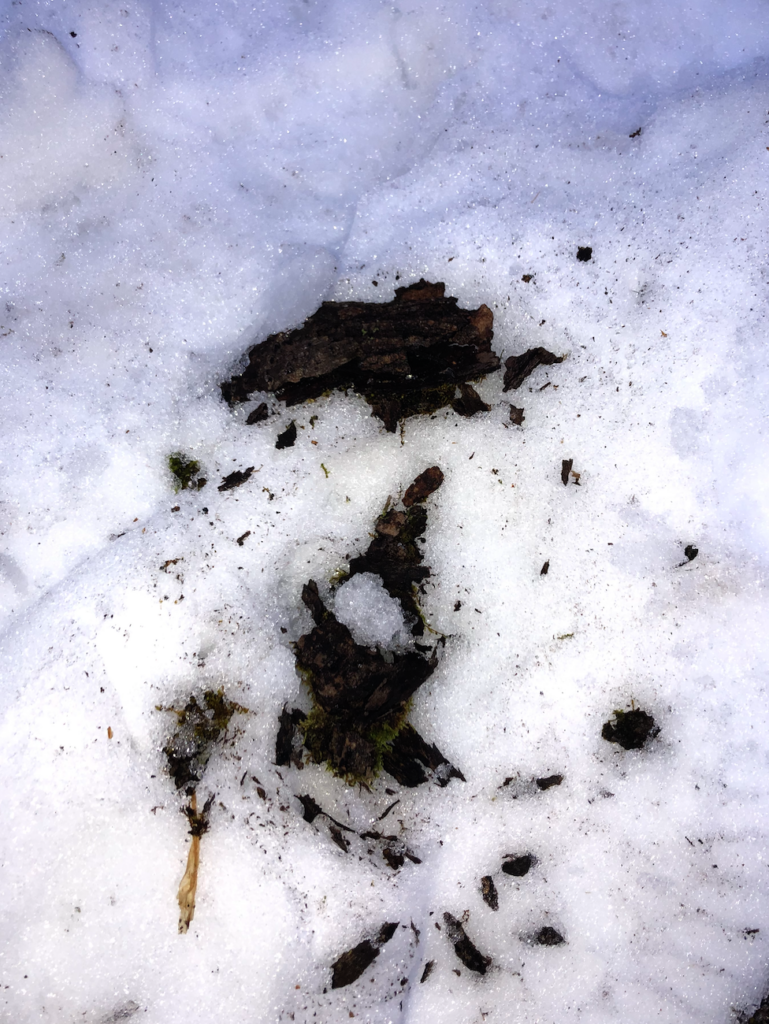
Menice, K. (ca. 2020)
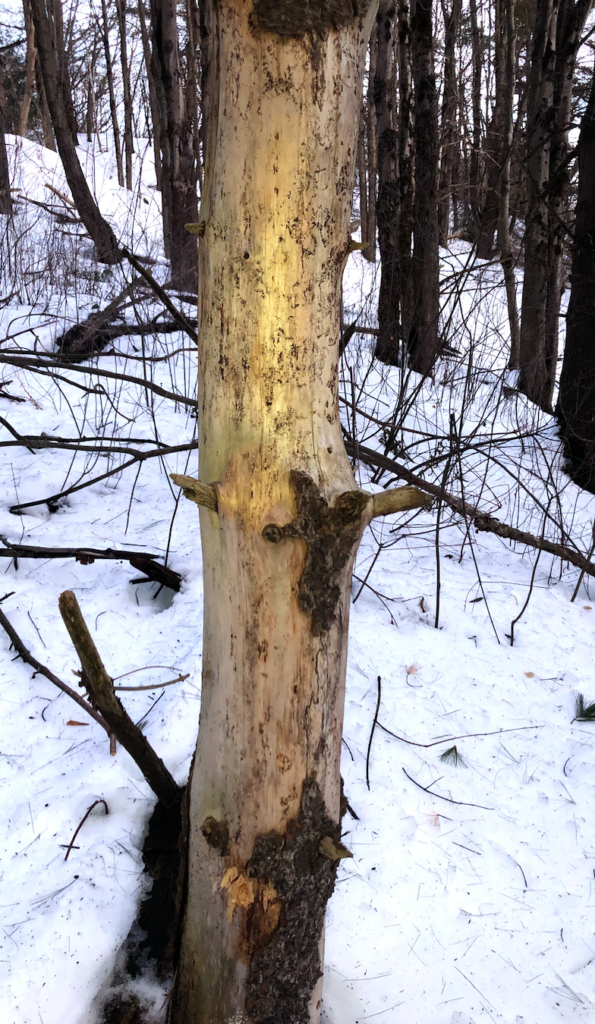
Menice, K. (ca. 2020)
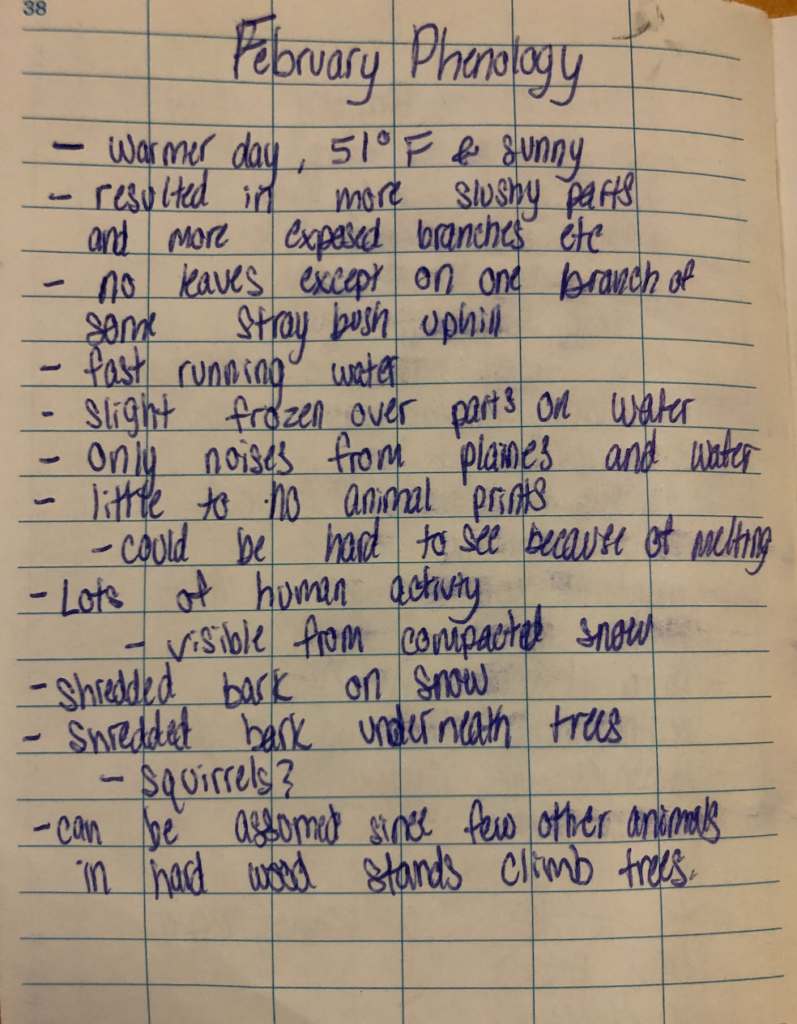
Figure 5. Feild Notes
Menice, K. (ca. 2020)
Citations:
Gray Squirrel. (n.d.). Retrieved February 25, 2020, from https://vtfishandwildlife.com/node/596
McDonald, 2020, Natural Resources and Human Ecology 002, lecture notes, University of Vermont, delivered January 2020.
McMILLAN-GAMBER, C. L. Y. D. E., & Nature’s Beauties & Intrigues. (2010, September 26). Tracking the predators of gray squirrels. Retrieved from https://lancasteronline.com/features/tracking-the-predators-of-gray-squirrels/article_9338f66c-9f8a-5e40-8ccd-d88cb7305b31.html
